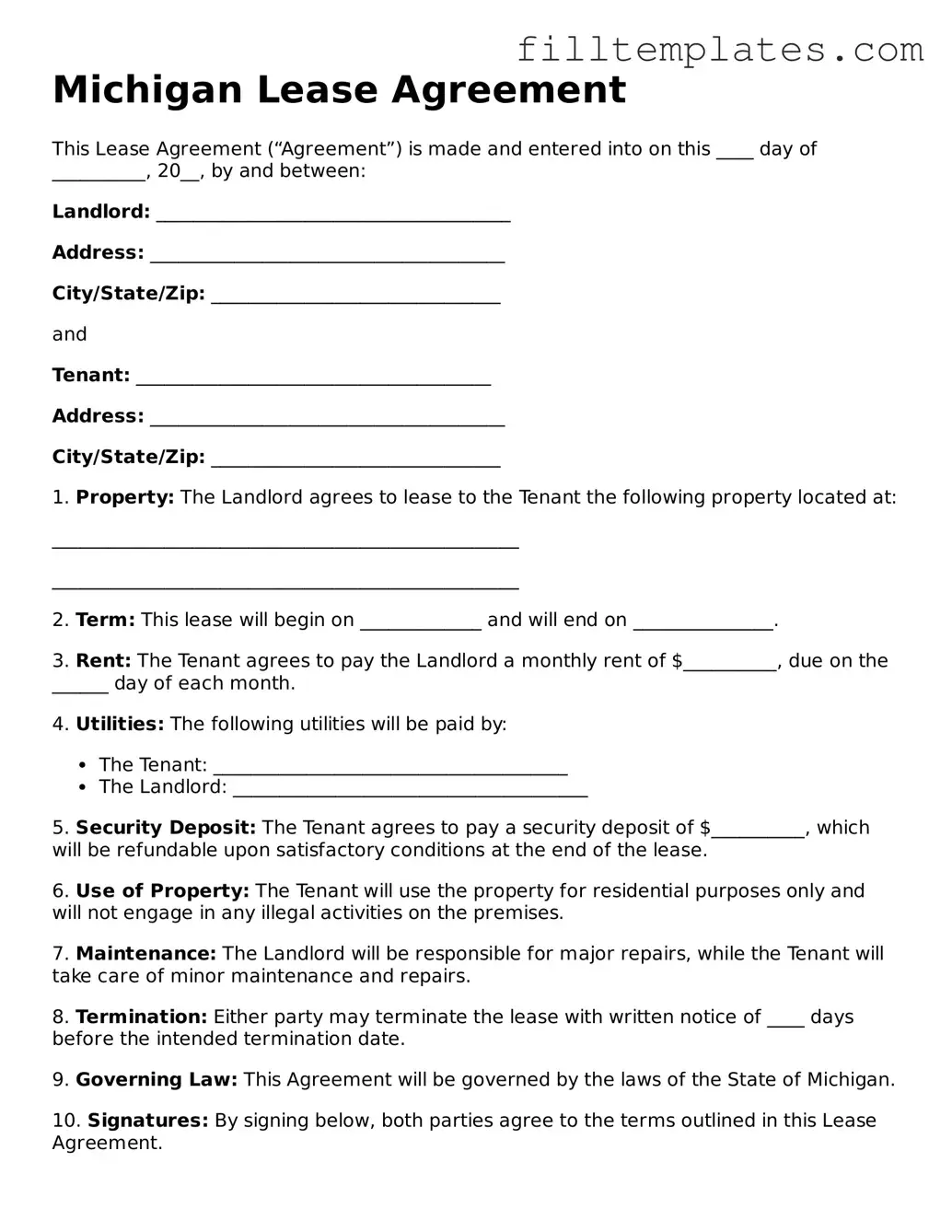Michigan Lease Agreement
This Lease Agreement (“Agreement”) is made and entered into on this ____ day of __________, 20__, by and between:
Landlord: ______________________________________
Address: ______________________________________
City/State/Zip: _______________________________
and
Tenant: ______________________________________
Address: ______________________________________
City/State/Zip: _______________________________
1. Property: The Landlord agrees to lease to the Tenant the following property located at:
__________________________________________________
__________________________________________________
2. Term: This lease will begin on _____________ and will end on _______________.
3. Rent: The Tenant agrees to pay the Landlord a monthly rent of $__________, due on the ______ day of each month.
4. Utilities: The following utilities will be paid by:
- The Tenant: ______________________________________
- The Landlord: ______________________________________
5. Security Deposit: The Tenant agrees to pay a security deposit of $__________, which will be refundable upon satisfactory conditions at the end of the lease.
6. Use of Property: The Tenant will use the property for residential purposes only and will not engage in any illegal activities on the premises.
7. Maintenance: The Landlord will be responsible for major repairs, while the Tenant will take care of minor maintenance and repairs.
8. Termination: Either party may terminate the lease with written notice of ____ days before the intended termination date.
9. Governing Law: This Agreement will be governed by the laws of the State of Michigan.
10. Signatures: By signing below, both parties agree to the terms outlined in this Lease Agreement.
Landlord Signature: ___________________________________ Date: ____________
Tenant Signature: ____________________________________ Date: ____________
